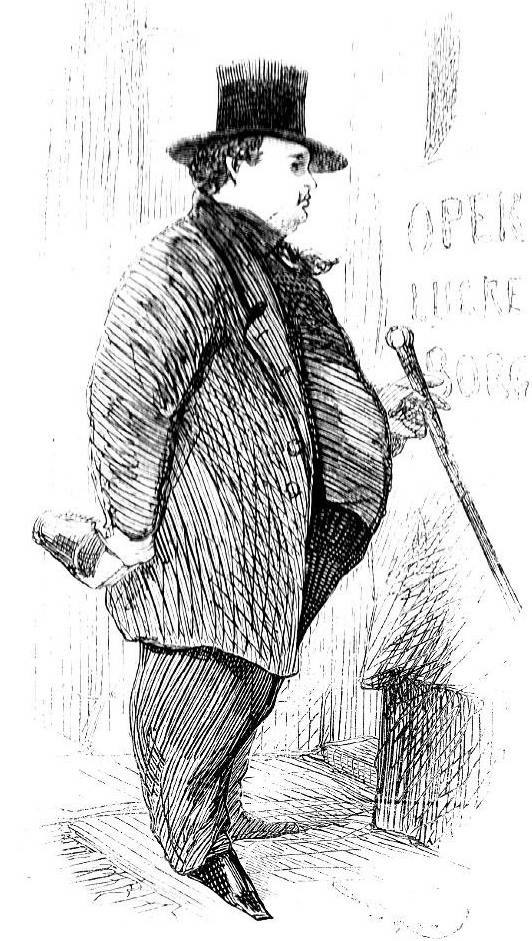Count Fosco contemplating an opera poster.
John McLenan
11 August 1860
10.5 cm high by 5.9 cm wide (4 ⅛ by 2 ¼ inches), vignetted, p. 501; p. 239 in the 1861 volume.
The headnote vignette for the thirty-eighth number of Collins's The Woman in White: A Novel in Harper's Weekly (11 August 1860).
The American illustrator focusses on Fosco's scrutinizing a poster advertising the debut of a Donizetti opera Lucrezia Borgia (1833) to prepare readers for the scene at the opera house in which Pesca identifies The ebullient opera-lover as a traitor to the cause of the Brotherhood, a radical and clandestine Italian political organisation whose mark of membership Pesca still bears.
Scanned image and text by Philip V. Allingham.
